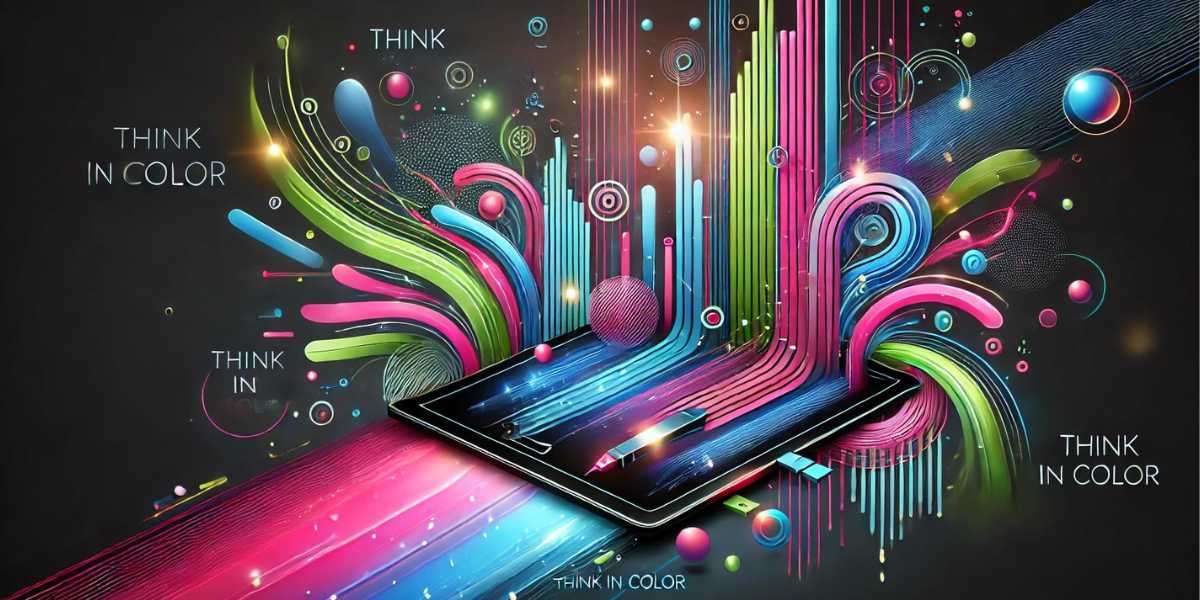Writers often focus on the words they choose, the structure they use, and the message they want to get across. But what if there’s another layer to consider—one that adds depth and nuance to your writing? Welcome to the fifth part of ZZatem Blogging's 10-part series on unique things to think about while writing blogs. The concept of “Thinking in Color” will be creating a stir and you are in on it now. By assigning different emotions, ideas, or sections of your blog to specific colors can alter the mood and tone of your writing.
Understanding the Power of Color in Writing
Colors have a big psychological impact on our perceptions and emotions. Just as a painter uses different colors to evoke certain feelings, writers can harness the power of color to create a more immersive and emotionally resonant reading experience. Visualizing different parts of your blog in distinct colors can guide the reader's emotions, emphasize key points, and enhance the overall narrative flow.
Assigning Emotions and Ideas to Colors
To start thinking in color, consider assigning specific emotions, ideas, or sections of your blog to different colors.
Here are some thoughts on how different colors might influence the tone and mood of your writing:
- Red: Red is often associated with passion, urgency, and excitement. Use red to highlight sections of your blog that deal with intense emotions or critical calls to action.
- Blue: Blue evokes calmness, trust, and stability. This color works well for sections where you want to convey reliability, peace, or introspection.
- Yellow: Yellow is the color of happiness, optimism, and creativity. It’s ideal for parts of your blog that are meant to inspire, motivate, or bring joy to your readers.
- Green: Green represents growth, health, and balance. It’s a great choice for sections that discuss personal development, wellness, or harmony.
- Purple: Purple is often linked to luxury, mystery, and spirituality. Use this color for topics that delve into deeper meanings, spiritual discussions, or to add a touch of elegance.
- Orange: Orange combines the energy of red and the joy of yellow. It’s perfect for content that is both enthusiastic and creative.
- Black: Black is associated with sophistication, authority, and depth. Use it sparingly to emphasize seriousness or to add a dramatic tone to your writing.
Visualizing Your Blog in Color
Once you’ve assigned colors to different parts of your blog, take a moment to visualize how these colors might interact. Imagine your writing as a canvas, with each section painted in its corresponding color. How does the overall mood of your blog shift when you visualize it in these colors? For example:
- A blog with red and black sections might feel intense, dramatic, and urgent. This combination could be ideal for a persuasive or argumentative piece.
- A blog with blue and green sections might evoke a sense of calm, trust, and growth. This might be more fitting for a blog about self-improvement or health.
- A blog with yellow and orange sections could feel vibrant, cheerful, and energetic. This could be perfect for a motivational or creative blog.
Creating Varied Tones with Color
By thinking in color, you can create varied tones throughout your blog. Instead of maintaining a single mood, you can guide your readers on an emotional journey. Here’s how:
- Start with a calm tone (blue): Begin your blog with a calm and trustworthy introduction. This sets a relaxed mood and makes readers feel comfortable.
- Build excitement (red or orange): As you move into the main content, introduce more vibrant colors like red or orange to build excitement and keep your readers engaged.
- Conclude with reflection (purple or green): End your blog with a reflective or balanced tone, using colors like purple or green to leave your readers with a sense of depth or harmony.
Practical Application: Writing Exercise
To put this into practice, try a simple exercise. Choose a blog topic and assign colors to different sections based on the emotions or ideas you want to convey. Write a few paragraphs for each section, focusing on how the assigned color influences your word choice, sentence structure, and overall tone.
For example, if you’re writing a blog about overcoming challenges, you might start with a blue section to discuss the initial calm before the storm, move into a red section to describe the struggle and conclude with a green section that emphasizes growth and recovery.
How do you think the mood of your own writing would change if you visualized it in different colors? Which colors would you assign to the emotions or ideas in your next blog post, and why?
Let us know in the comments!
If you have any questions message us at ZZHello!








